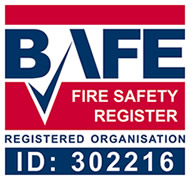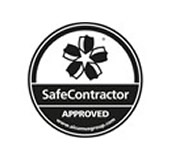Winter is rapidly approaching and as the temperatures drop the chances are you’ll be lighting the fire or stove and maybe thinking about creating a cosy atmosphere with a few candles. Whilst nothing quite beats the glow from an open fire or candles, the risk of fire is something that should be taken seriously.
A wide range of fire, smoke and heat alarms are available with a choice of products suitable for installation in residential properties. There are four main types of smoke alarm on the market: ionisation, optical (sometimes described as photo electronic), heat and combined alarms.
Ionisation: Ionisation smoke alarms are the cheapest option with a number of products available which cost under £10. Ionisation smoke alarms are incredibly sensitive to the small particles of smoke which are generated by fast flaming fires, such as fires caused by burning wood or paper. Ionisation alarms will detect this type of fire before the smoke has had a chance to get too thick. However, they are slightly less sensitive to slow burning or smouldering fires as these tend to give off a much larger quantity of smoke before any flames appear. In addition, this type of alarm is generally not suitable for use in a kitchen as they are too over-sensitive.
Optical alarms: These smoke alarms are more expensive but have the advantage of being able to detect the large particles of smoke which are produced by the slow burning fires which are generated by smouldering foam-filled furniture or PVC wiring which has overheated. On the flip-side they are slightly less sensitive to fast flaming fires. Optical alarms can be installed near to kitchens but not inside a kitchen.
Heat alarms: This type of alarm is insensitive to smoke and detects increases in temperature, making it suitable for use in kitchens. However, they only cover a fairly small area so if you have a very large kitchen you might need more than one heat detector.
Combined optical smoke and heat alarms: These alarms combine the benefits of optical and heat alarms in one unit and offer a higher speed of fire detection.
Combined smoke and carbon monoxide alarms: Combined alarms combine the benefits of smoke detectors and carbon monoxide detectors and are a great way to save space and costs.
Protecting your home and family from the risk of fire is vital and if you would like further information on domestic smoke alarm systems, please don’t hesitate to get in touch.








